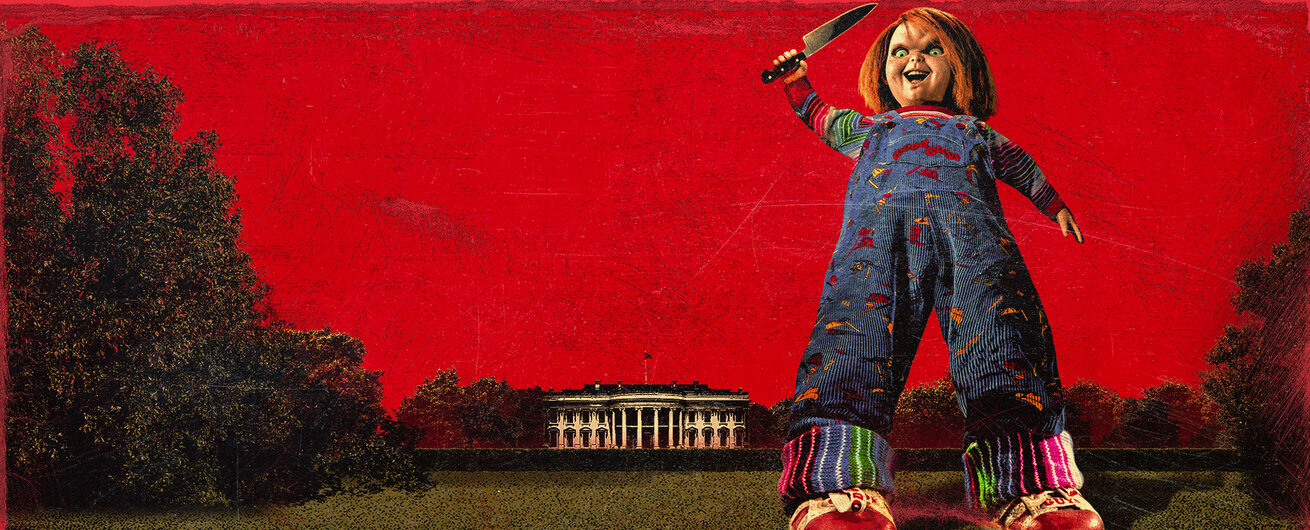Create a free profile to get unlimited access to exclusive show news, updates, and more!
Is Chucky Real? The Story Behind Serial Killer Charles Lee Ray, Explained
"Chucky" Season 2 premieres on USA Network and SYFY on Oct. 5.

Countless movies and series are “based on a true story.” But is the “Child’s Play” series — which follows the murderous exploits of a Good Guy doll possessed by the soul of infamous serial killer Charles Lee Ray — based in reality?
While creator Don Mancini took inspiration from his childhood and horror stories that came before, the character of Charles Lee Ray, aka Chucky, is completely fictional. As far as we know, no one in the course of human history has used a dark spell to transfer their soul into a doll’s body in order to narrowly escape death only to then wreak tiny, cackling havoc on unsuspecting families for decades. (And here’s hoping it stays that way!)
However, that doesn’t mean elements of the character, the films, and USA Network and SYFY’s “Chucky” series didn’t stem from real-world inspirations.
For one, there’s his name. Our own history is littered with killers on par with the fictional Charles Lee Ray, whose name is actually a mashup of three real-life criminals: “Charles” is a nod to Charles Manson, “Lee” to Lee Harvey Oswald, and “Ray” to James Earl Ray. His nom de guerre, the “Lakeshore Strangler,” is likely a nod to the Hillside Stranglers (who were apprehended in 1979, less than a decade before the original “Child’s Play” hit theaters in 1988) or the Boston Strangler, who murdered at least 11 women in the early ‘60s.
It’s not just in the name, either. The horrors of the “Child’s Play” franchise as a whole — the initial concept — is pulled from creator Mancini’s real-world experiences. Mancini has spoken at length about how his father’s job in marketing felt pessimistic in how it spoke about children.
“Because of my exposure to the world of advertising and marketing through my dad, I was very aware from an early age of the cynicism inherent in that world, particularly selling products to children,” he said on the “Post Mortem” podcast. “Madison Avenue refers to children as ‘consumer trainees’ and I discovered that as a child … I wanted to write a dark satire about how advertising affects children.”
Granted, the majority of dolls marketed to kids don’t come to life and wield kitchen knives as weapons, but the artistic change feels warranted in this case.
As far as the haunting of it all? Possession, voodoo, and the like?
While it’s been stated that Chucky was inspired by Robert the Doll, an infamous, supposedly haunted doll made of mohair and sporting a rather … blank look, David Sloan, a paranormal researcher and author with a particular interest in Robert, told “Florida Weekly” in 2017 that the doll was not, in fact, an inspiration for our favorite fictional menace.
“‘Child’s Play’ creator Don Mancini has stated that the My Buddy Doll and Cabbage Patch Kids inspired his movies. Robert has parallels, but had nothing to do with it. Too many people will sacrifice the truth for a good story. Nobody wants to let this lie die,” Sloan said.
So while our friend ‘til the end might stem from more innocent toys than a truly haunted doll, fans of USA and SYFY’s “Chucky” series can rest easy (or maybe not so easy) knowing that while Chucky might not be real, plenty about him and his story is very real.
You can check up on "Chucky" Season 1 by streaming on Peacock. And catch "Chucky" Season 2 when it premieres on USA Network and SYFY on Oct. 5 at 9 p.m. ET.



